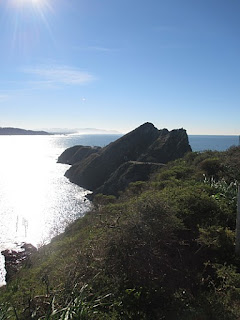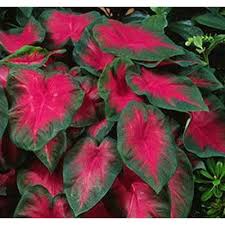Once home to some of America's most notorious criminals, and famous all over the world, Alcatraz island is now a tourist attraction in the San Francisco Bay. The first lighthouse on the Pacific Coast, the former prison cells and most of all the historic gardens are luring visitors.
.
As early as 1869, military inmates began tending the Gardens of Alcatraz. Many of these inmate gardeners had no horticulture experience, but with vocational training and donated plants, they were able to transform the barren rock into extensively planted terraces, including a rose garden and cutting gardens overflowing with brightly colored flowers. Alcatraz gardeners/inmates needed tough plants that could survive with little water or care. Today, visitors to Alcatraz find a landscape alive with fragrant old roses, fig trees, bulbs, and colorful succulents.
.
The work was a privilege: not only did it allow inmates to be out of their cells and away from the tension of the prison, but it also offered them a chance to create beauty in a forbidding environment.
.
The island is open to visitors every day year-round except for Thanksgiving, Christmas and New Year’s Day. Although there is not an entrance fee, there is a charge for the ferry service, supplied by a private company under contract to the National Park Service, from Pier 33 in San Francisco. For additional information on schedules, prices, parking, and to purchase tickets in advance (tickets are made available about 90 days in advance) please visit the Alcatraz Cruises website. Alcatraz frequently sells out, as much as a week in advance, in summer and near holidays. In early March a round trip ticket is $30. The best time to visit the Gardens of Alcatraz is from January to September, and especially in the spring from January to March.
.
A Visitor to the Gardens Gives this Advice:
“Because Alcatraz is surrounded by water whose temperature rarely goes below 50F, the island is literally in a temperature zone warmer than its landlocked neighbors. January is the most pleasant month to visit because the summer fogs are absent and winds are mild because the temperature differential between the coast and valley are minimal. And the birds are mostly gone so their droppings are gone too. It's been up in the high 60's on the island while SF is low 60's on the same day.”
.
And Here a bit Alcatraz Garden History:
Once home to some of America's most notorious criminals, the federal penitentiary that operated here from 1934 to 1963 brought a dark mystique to the Rock. The presence of infamous inmates like Al "Scarface" Capone and the "Birdman" Robert Stroud helped to establish the island's notoriety. To this day, Alcatraz is best known as one of the world's most legendary prisons. In the 1920s, hundreds of trees and shrubs were planted as part of a general beautification project.
.
The most significant phase of garden construction began in the mid-1930s when Fred Reichel, the secretary to the warden, convinced the warden to allow prisoners to work in the gardens. At the same time, he sought the advice of the California Horticultural Society and plant breeders on which plants might thrive on Alcatraz and was able to obtain a large variety of Mediterranean-climate plants. The offspring of many of these plants continue to be found in today’s gardens.
In 1941, prisoner Elliott Michener began a nine-year stint as the head gardener. He built a greenhouse and was allowed to order large amounts of seeds and bulbs. His labor helped shaped the terraced gardens on the east side.
After the prison closed in 1963, the gardens were abandoned and fell into disrepair together with everything else on the island. Plants that required irrigation for survival died while those that were able to make do with natural rainfall and moisture from the frequent fog—mostly succulents—survived.
In 2003, the Garden Conservancy, Golden Gate National Parks Conservancy, and the National Park Service launched a cooperative project to restore the island’s gardens. With the help of countless volunteers, horticulturists propagated new material from the surviving plants and brought in new introductions appropriate for the harsh climate.
.
Enjoy this unusual garden trip to the Alcatraz prison island!
.
<><><><><>
.


















